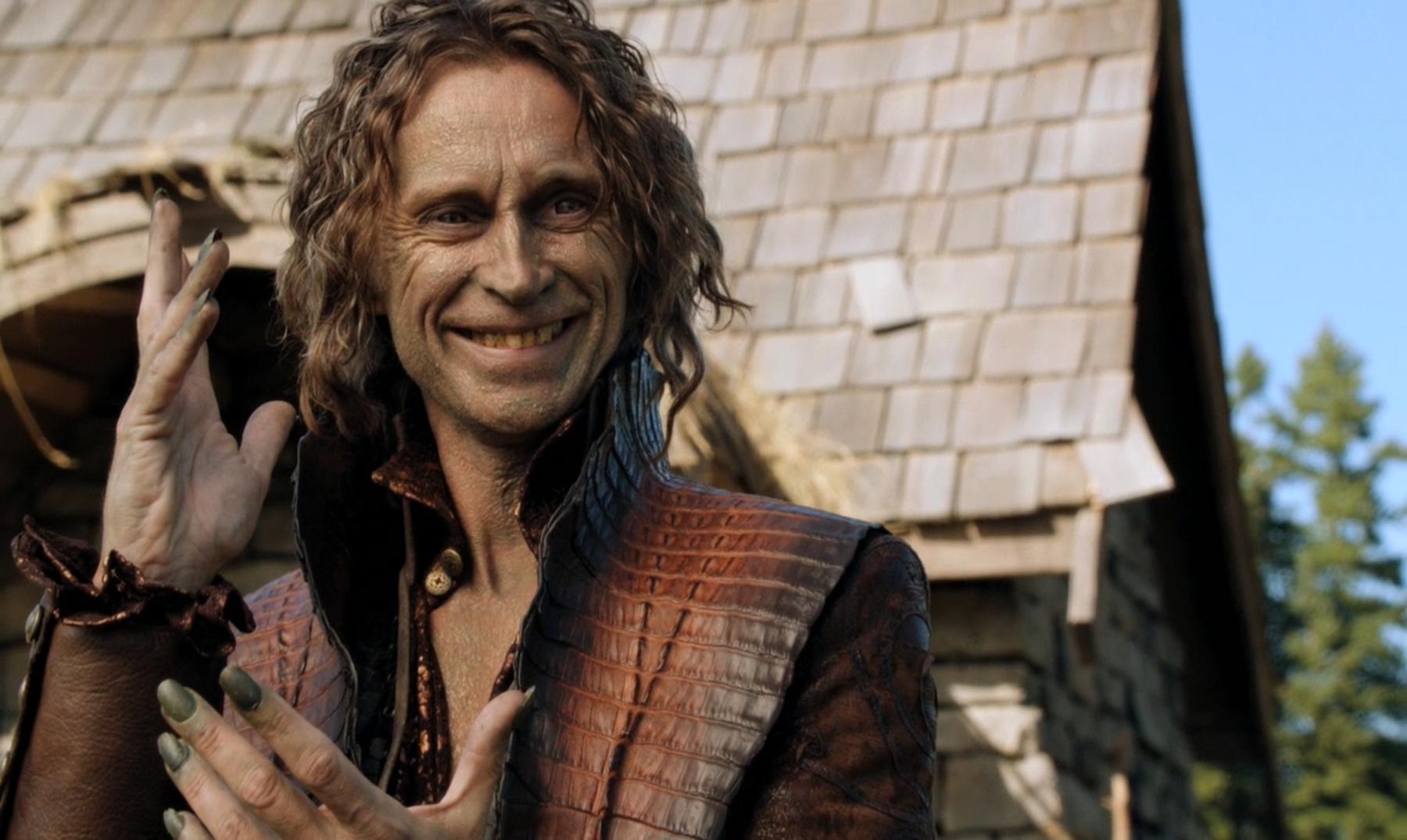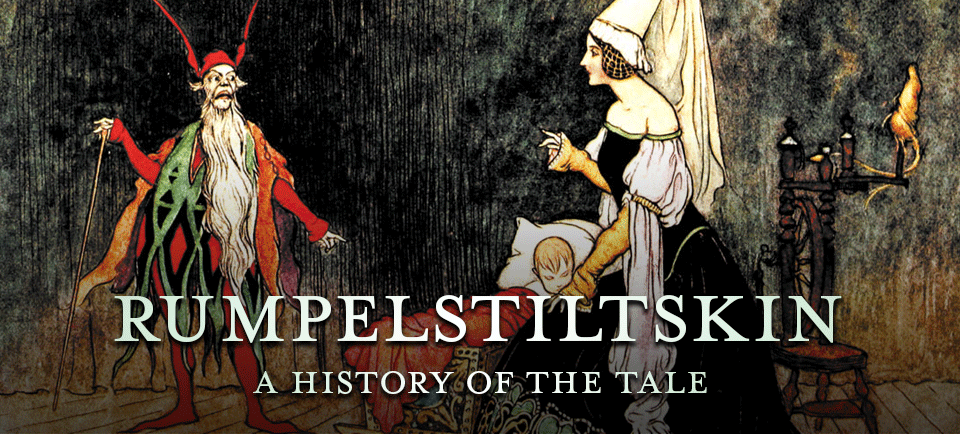Rumpelstiltskin’s Etymology and Origins: Rumpelstiltskin Meaning

Rumpelstiltskin meaning – The name “Rumpelstiltskin” is derived from the German words “rumpeln,” meaning “to rumble” or “to make a noise,” and “stilz,” meaning “leg.” The name thus translates to “little noisy leg,” which may refer to the character’s diminutive size and mischievous nature.
Rumpelstiltskin, the cunning imp who spun straw into gold, represents the underdog’s triumph over adversity. His name evokes the idea of someone who is underestimated or dismissed, like the underdog in a competition. Just as Rumpelstiltskin’s true nature was hidden behind his diminutive stature, so too can the underdog’s potential be overlooked.
However, when given the opportunity to prove themselves, they can rise to the challenge and achieve remarkable feats, just like Rumpelstiltskin’s ability to spin gold.
The character of Rumpelstiltskin has its origins in German folklore, first appearing in the Brothers Grimm’s collection of fairy tales in 1812. However, similar characters with comparable abilities and personalities have been found in folklore from around the world, suggesting a common archetype.
Rumpelstiltskin, the mischievous imp from the fairy tale, embodies the dangers of making rash promises. Similarly, in the slang world, “buttermilk” carries a cautionary connotation. Just as Rumpelstiltskin’s true nature was hidden until it was too late, so too can the true meaning of “buttermilk” be deceptive.
While it may seem innocuous, referring to someone as “buttermilk” according to the Urban Dictionary can imply a lack of intelligence or gullibility. Thus, like Rumpelstiltskin’s name, the term “buttermilk” serves as a reminder to be wary of hidden meanings.
Name Variations
The name “Rumpelstiltskin” has undergone various transformations across different languages and cultures:
- In English, the name is often shortened to “Rumpel.”
- In French, the character is known as “Rumpelstiltskin” or “Riquet à la Houppe.”
- In Spanish, the name is “Rumpelstiltskin” or “Tremotino.”
- In Italian, the character is called “Rumpelstiltschen” or “Tremotino.”
- In Russian, the name is “Rumpelshtiltshen.”
Rumpelstiltskin’s Character and Motives

Rumpelstiltskin is a complex and enigmatic figure in folklore, embodying both malevolence and vulnerability. His physical appearance is often described as grotesque, with a stunted body, long, crooked nose, and piercing eyes that seem to bore into one’s soul. This grotesque exterior reflects his inner turmoil and the dark powers he wields.
Rumpelstiltskin’s personality is characterized by a combination of cunning, greed, and a deep-seated sense of resentment. He is a master manipulator, using his knowledge of magic and the weaknesses of others to achieve his ends. However, beneath this manipulative facade lies a profound loneliness and a desire for acceptance that drives his actions.
Motivations
Rumpelstiltskin’s motivations are complex and multifaceted. His primary motivation is a desire for power and control. He seeks to dominate others, using his magic to manipulate their lives and bend them to his will. This desire for power stems from his own feelings of inadequacy and insecurity, which he compensates for by asserting his control over others.
Another significant motivation for Rumpelstiltskin is his greed. He is obsessed with acquiring wealth and material possessions, seeing them as a way to compensate for his own lack of worthiness. His greed often leads him to make reckless and impulsive decisions, ultimately leading to his downfall.
Symbolism and Deeper Meanings
Rumpelstiltskin’s character is rich in symbolism and deeper meanings. His grotesque appearance represents the hidden darkness that can lurk within the human psyche. His ability to spin straw into gold symbolizes the transformative power of magic, but also the dangers of unchecked ambition.
Rumpelstiltskin’s name, which translates to “little noisy spirit,” suggests his elusive and enigmatic nature. He is a creature of both the physical and spiritual realms, capable of manipulating both human and supernatural forces. His story serves as a cautionary tale about the dangers of greed, pride, and the pursuit of power at any cost.
Rumpelstiltskin in Literature and Adaptations
Rumpelstiltskin, a beloved fairy tale, has captivated readers for centuries. Its origins can be traced back to oral traditions, but it was first published by the Brothers Grimm in 1812. Since then, the story has been adapted into numerous literary works, plays, films, and television shows.
History of Rumpelstiltskin in Literature, Rumpelstiltskin meaning
The original Grimm Brothers’ version of Rumpelstiltskin is a dark and cautionary tale about the dangers of pride and greed. In this version, a young miller’s daughter is forced to spin straw into gold by a malevolent imp named Rumpelstiltskin. If she fails, she will forfeit her firstborn child.
Over the years, Rumpelstiltskin has been adapted into various literary works, each with its own unique interpretation of the story. Some notable adaptations include:
- The Rumpelstiltskin Problem by P.D. Eastman (1965): A humorous retelling of the story, focusing on the imp’s attempts to outwit the miller’s daughter.
- Rump: The True Story of Rumpelstiltskin by Liesl Shurtliff (2013): A prequel to the original fairy tale, exploring Rumpelstiltskin’s backstory and motivations.
- The Wrath and the Dawn by Renée Ahdieh (2015): A fantasy novel inspired by Rumpelstiltskin, featuring a strong female protagonist who must solve a series of riddles to save her kingdom.
Cultural Impact of Rumpelstiltskin
Rumpelstiltskin has had a significant cultural impact, influencing popular culture in various ways:
- Name Recognition: The name “Rumpelstiltskin” has become synonymous with trickery and deceit.
- Moral Lessons: The story teaches valuable lessons about the importance of honesty, humility, and perseverance.
- Artistic Inspiration: Rumpelstiltskin has been the subject of numerous works of art, including paintings, sculptures, and musical compositions.
Rumpelstiltskin, a figure in German folklore, represents the power of hidden knowledge and the dangers of making hasty deals. His name, meaning “little rattle-bone,” evokes a sense of mischief and the unpredictability of fate. Similarly, the bumper to bumper story illustrates the unexpected challenges and frustrations that can arise in everyday life, reminding us that even the most mundane tasks can hold hidden complexities.
The name Rumpelstiltskin, a mischievous imp from German folklore, resonates with the underdog’s plight. In the tale, the protagonist’s secret power to spin straw into gold is exploited by a greedy king. Similarly, the underdog, often underestimated, possesses hidden strengths that defy expectations.
This concept aligns with the underdog definition , where individuals or teams overcome adversity to emerge victorious. Just as Rumpelstiltskin’s secret is eventually revealed, the underdog’s determination and resilience ultimately triumph.
Rumpelstiltskin, the enigmatic figure from the classic fairy tale, represents the darker aspects of our nature, the secrets we keep hidden. His name, meaning “noise from the rump,” evokes the unsettling and disruptive force he brings to the story. Interestingly, the “buttermilk tale” explores similar themes of hidden identities and the consequences of breaking promises.
Just as Rumpelstiltskin’s true name reveals his true nature, the buttermilk tale delves into the dangers of keeping secrets and the importance of facing our own inner demons.